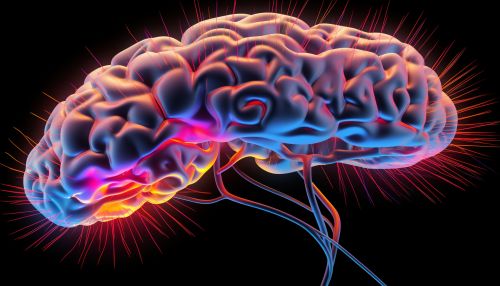Sensory Processing
Introduction
Sensory processing refers to the way the nervous system receives messages from the senses and turns them into appropriate motor and behavioral responses. Whether you are biting into a hamburger, riding a bicycle, or reading a book, your successful completion of the activity requires processing sensation or "sensory integration."


Sensory Systems
Sensory systems are part of the nervous system responsible for processing sensory information. They consist of sensory receptors, neural pathways, and parts of the brain involved in sensory perception. Commonly recognized sensory systems are those for vision, auditory (hearing), somatic sensation (touch), gustatory (taste), olfaction (smell) and vestibular (balance/movement). In addition, some scientists include proprioception (sense of body position) and nociception (sense of pain) as additional senses.
Vision
The visual system is the sensory system for vision. The human eye acts like a camera to collect and focus light, which is then detected by specialized cells in the retina. These cells, called photoreceptors, convert light into electrical signals that can be processed by the brain. The optic nerve then transmits these signals to the visual cortex, the part of the brain responsible for processing visual information.
Auditory
The auditory system is the sensory system for hearing. Sound waves are collected by the outer ear and sent down the ear canal to the eardrum. The sound causes the eardrum to vibrate, which in turn moves the tiny bones in the middle ear. These bones amplify the sound vibrations and send them to the inner ear, or cochlea. Here, the vibrations are converted into electrical signals by hair cells and sent to the brain via the auditory nerve.
Somatic Sensation
The somatosensory system is the sensory system for touch. This system is spread throughout the entire body and includes a variety of receptors, including thermoreceptors (temperature), nociceptors (pain), and mechanoreceptors (pressure and vibration). These receptors send signals through sensory nerves to the spinal cord, which then relays the information to the brain.
Gustatory
The gustatory system is the sensory system for taste. Taste buds on the tongue contain specialized sensory cells that respond to chemicals in food and drink. These cells send signals to the gustatory cortex in the brain, which interprets these signals as different tastes.
Olfactory
The olfactory system is the sensory system for smell. The olfactory epithelium, located in the nasal cavity, contains specialized sensory neurons that detect airborne chemicals. These neurons send signals directly to the olfactory bulb in the brain, which processes these signals as different smells.
Vestibular
The vestibular system is the sensory system that provides the leading contribution to the sense of balance and spatial orientation for the purpose of coordinating movement with balance. The vestibular system sends signals primarily to the neural structures that control eye movements, and to the muscles that keep an individual upright.
Sensory Processing Disorders
Sensory processing disorders (SPD) are a clinical diagnosis characterized by the way the brain receives, organizes and responds to sensory input in an atypical way. SPD can affect one sense or multiple senses, and its effects can range from mild to severe. Individuals with SPD may over-respond to sensory input, under-respond, or fluctuate between the two.
There are three primary types of SPD: Sensory Modulation Disorder, Sensory-Based Motor Disorder, and Sensory Discrimination Disorder. Each of these disorders can manifest in a variety of ways, and the symptoms can vary greatly from person to person.
Treatment and Management
Treatment for sensory processing disorders typically involves occupational therapy, using a sensory integration approach. Therapy usually takes place in a sensory-rich environment where therapists work with children to improve their ability to process sensory information. This can involve a variety of strategies, including sensory diet, which involves a carefully planned program of specific sensory activities that is designed to help an individual stay focused and organized throughout the day.
